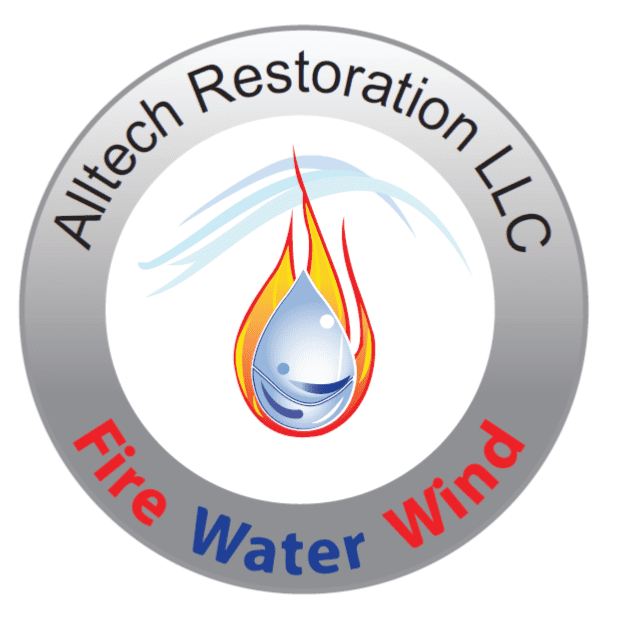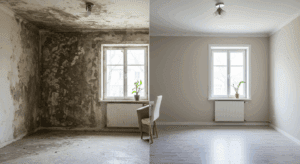Water damage and black mold are two interconnected issues that can wreak havoc on your home and health. Whether caused by natural disasters, plumbing failures, or poor ventilation, water damage creates the perfect environment for black mold to thrive. This article explores the causes, health risks, and effective strategies for preventing and addressing these problems.
What is Water Damage?
Definition and Types of Water Damage
Water damage refers to the destruction caused by water intruding into a structure, leading to the deterioration of materials and fostering harmful conditions. It can be categorized into three types:
- Clean Water Damage: Caused by uncontaminated water from sources like broken pipes or rainwater.
- Grey Water Damage: Involves water with some contaminants, such as from dishwashers or washing machines.
- Black Water Damage: The most hazardous type, involving highly contaminated water from sewage or floodwaters.
Understanding these types is crucial for determining the appropriate cleanup and repair methods.
Common Causes of Water Damage
Water damage can result from various sources, including:
- Burst or leaking pipes
- Roof leaks during heavy rains
- Poor drainage systems
- Overflowing appliances like washing machines
- Flooding due to natural disasters
Identifying the root cause is essential for effective remediation and prevention of further damage.
The Relationship Between Water Damage and Black Mold
How Water Damage Leads to Mold Growth
When water damage occurs, it creates a damp environment that is ideal for mold growth. Mold spores, which are naturally present in the air, settle on wet surfaces and begin to multiply. Within 24 to 48 hours, mold colonies can form, spreading rapidly if the moisture issue is not addressed.
Conditions Favoring Black Mold Development
Black mold, scientifically known as Stachybotrys chartarum, thrives in specific conditions:
- High humidity levels (above 60%)
- Poor ventilation
- Organic materials like wood, drywall, or carpet
- Prolonged exposure to moisture
These conditions are often found in basements, bathrooms, and areas affected by water damage. Addressing these factors is key to preventing mold growth.
Health Risks Associated with Black Mold
Symptoms of Mold Exposure
Exposure to black mold can lead to a range of health issues, particularly for individuals with allergies, asthma, or weakened immune systems. Common symptoms include:
- Sneezing and nasal congestion
- Skin rashes
- Eye irritation
- Persistent coughing or wheezing
These symptoms can worsen with prolonged exposure, making it crucial to address mold issues promptly.
Long-term Health Effects
Chronic exposure to black mold can have severe consequences, including:
- Respiratory infections
- Chronic fatigue
- Neurological issues like memory loss or difficulty concentrating
- Toxic mold syndrome, which can cause systemic inflammation
Protecting indoor air quality is vital for maintaining health and well-being.
Prevention and Remediation Strategies
Immediate Actions After Water Damage
Taking swift action after water damage can prevent mold growth and minimize repair costs. Key steps include:
- Removing standing water using pumps or vacuums
- Drying affected areas with fans and dehumidifiers
- Disposing of water-damaged materials like carpets or insulation
- Cleaning surfaces with antimicrobial solutions
Addressing water damage promptly reduces the risk of mold infestation.
Professional Mold Remediation Services
For extensive mold problems, professional remediation services are often necessary. Experts use specialized equipment and techniques to:
- Identify the extent of mold growth
- Contain affected areas to prevent further spread
- Remove mold-infested materials safely
- Restore damaged structures
Professional services ensure thorough and effective mold removal, safeguarding your home and health. Learn more about expert mold removal and restoration services.
DIY Mold Removal Techniques
For smaller mold issues, DIY methods can be effective. Steps include:
- Wearing protective gear, such as gloves and masks
- Scrubbing moldy surfaces with a mixture of water and detergent
- Using vinegar or hydrogen peroxide for natural mold removal
- Ensuring proper ventilation during and after cleaning
While DIY methods can address minor problems, professional help is recommended for larger infestations or toxic mold.

Water damage and black mold are serious issues that require immediate attention. By understanding their causes, health risks, and prevention strategies, you can protect your home and loved ones. Whether through DIY efforts or professional services, addressing these problems promptly ensures a safe and healthy living environment. For more insights, explore our comprehensive guide to mold growth and effective mold removal solutions.




